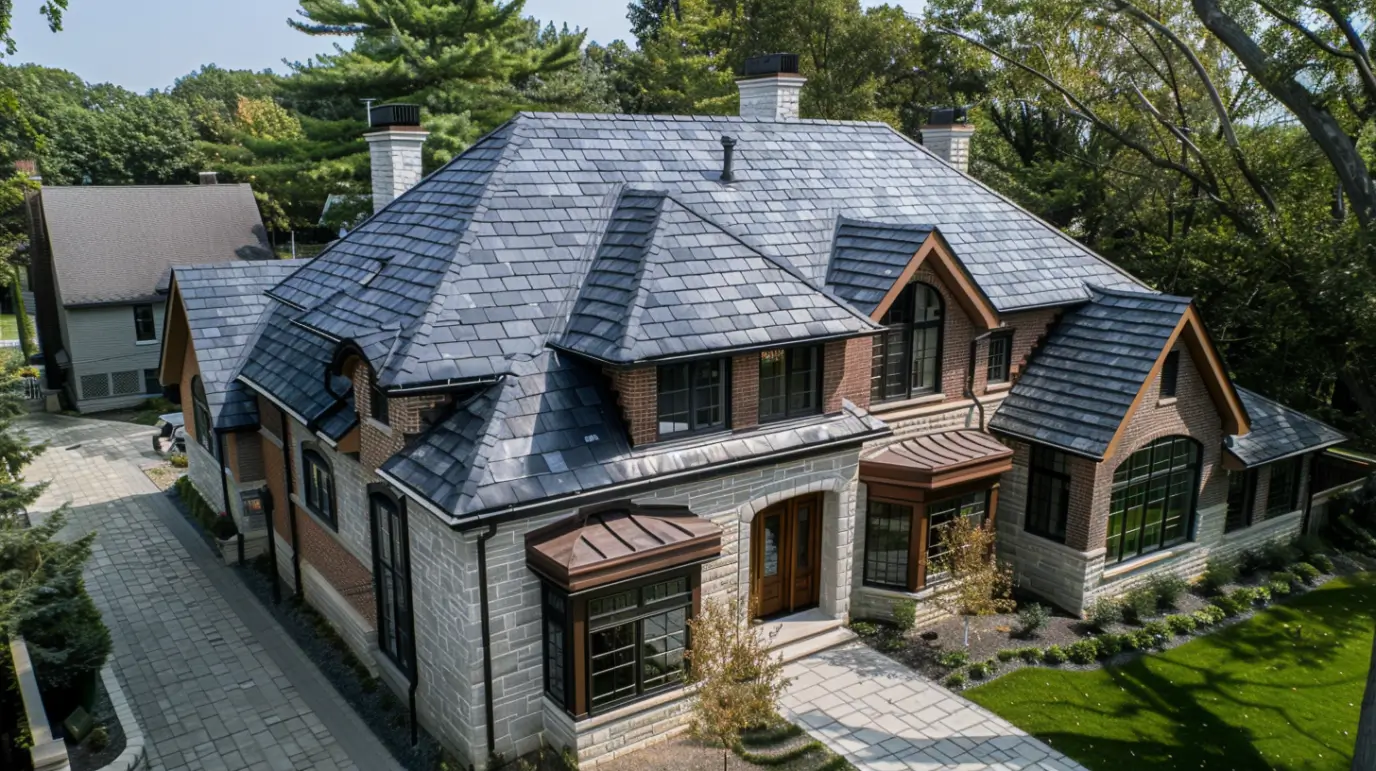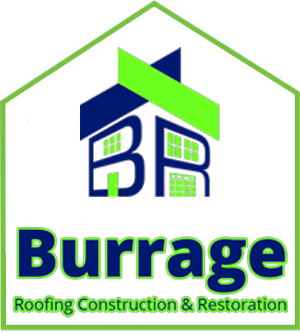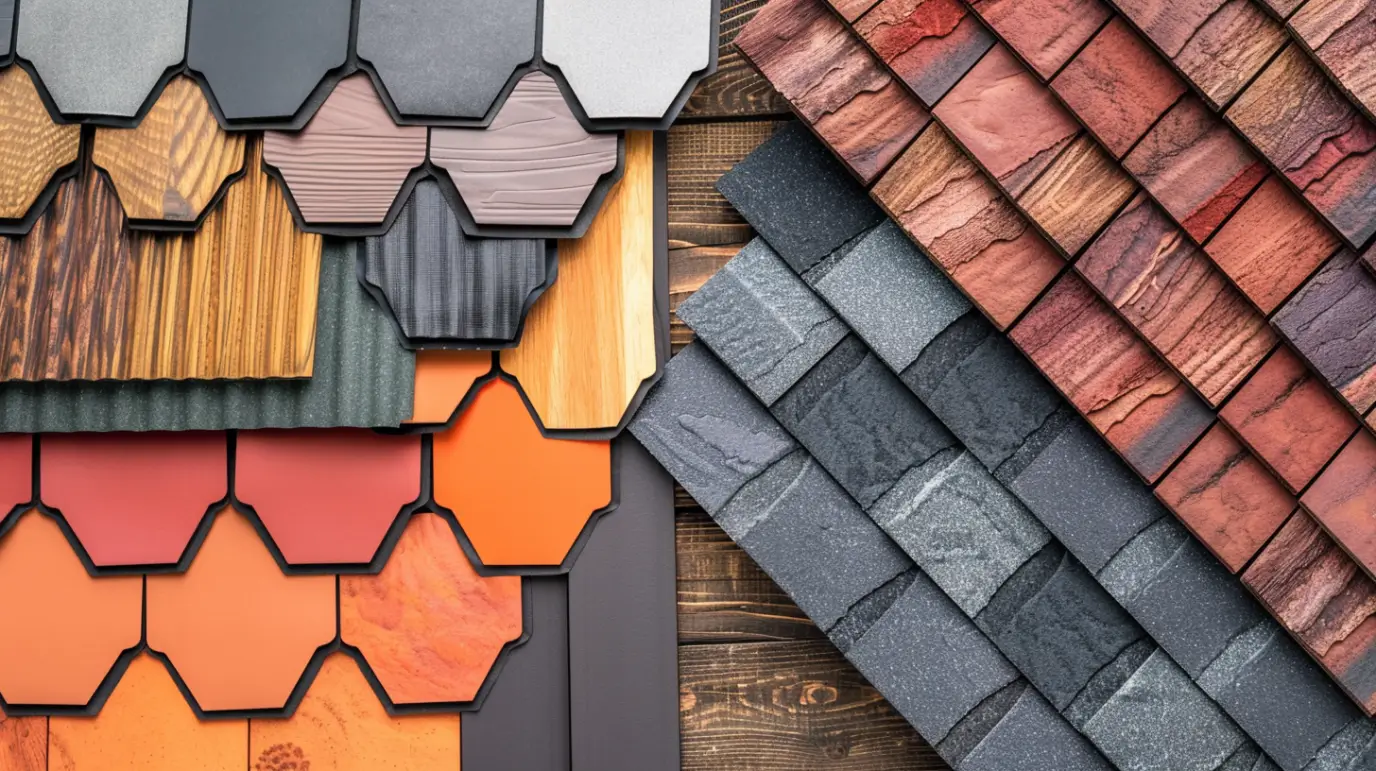Considering a slate roof? You have two options: natural or synthetic slate. Natural slate offers timeless beauty and durability, while synthetic slate provides a cost-effective alternative with modern advancements. To choose the best roofing for your needs, evaluate strength, weather resistance, and long-term value when building a new roof. At Burrage Roofing, we assist Quad Cities homeowners in selecting the right roofing solutions, backed by over thirty years of expertise in natural and synthetic roofs, giving you a good idea of what to choose.
Understanding Slate Roofing: Synthetic vs Natural
Natural slate has long been favored in roofing for its aesthetic appeal and durability. However, its weight and cost can be prohibitive for some homeowners.
Synthetic slate is an increasingly popular alternative, offering the look of natural slate at a lower price and reduced weight, minimizing strain on the roof’s structure.
Both materials have unique advantages: natural slate excels in high-end aesthetics, while synthetic slate offers versatility. Many homeowners seek a balance between the two to meet their needs.
Contact Us
What is Natural Slate Roofing?
Natural slate roofing is celebrated for its elegant appearance and exceptional durability. With unique textures and colors, slate tiles enhance the charm of historic and upscale homes.
However, natural slate is one of the costliest roofing materials due to its premium price, challenging installation, and requirement for a strong roof structure.
Homeowners should conduct routine inspections to maintain its condition. Despite the high initial cost, natural slate’s durability and longevity make it an excellent choice for those seeking a strong, attractive roof that lasts.
What is Synthetic Slate Roofing?
Synthetic slate roofing replicates the look of natural slate tiles, made from advanced polymers. Lighter than natural slate, these tiles ease installation and reduce structural strain.
Recent advancements have improved synthetic slate’s resistance to moisture, hail, and sunlight, enhancing durability in extreme weather while maintaining quality.
Popular with environmentally-conscious homeowners, many manufacturers use recycled materials, making synthetic slate a sustainable option. Available in various designs, it is energy-efficient and affordable, offering a modern aesthetic without compromising style or quality—a strong choice for an attractive roof.

Comparing Appearance and Curb Appeal
Choosing between natural and synthetic slate often comes down to aesthetics. Natural slate is favored for its timeless beauty, providing a classic look that never goes out of style.
Conversely, synthetic slate closely mimics the rich textures and colors of natural slate. It offers a cost-effective option that suits various home styles. Understanding the differences between these materials will help you select one that aligns with your taste and budget.
Aesthetic Qualities of Natural Slate
Natural slate is prized for its elegant roofing aesthetic, giving traditional homes a distinctive look.
- Though pricier than many materials, it’s often seen as the most visually appealing option.
- Available in various colors, from soft greys to bold greens, it allows homeowners to express their style.
- Each tile boasts unique natural patterns, adding character and depth to the roof.
- Its enduring beauty keeps your roof a focal point for years.
However, this beauty demands a premium price and more maintenance. Natural slate is best for homeowners ready to invest time and money for an eye-catching finish.
Design Versatility with Synthetic Slate
Synthetic slate is an excellent choice for durable and aesthetically appealing roofing. Its popularity stems from its longevity and diverse style options.
- Offers a wide range of designs and finishes for various needs.
- Mimics natural slate’s elegant look at a lower cost.
- Complements both modern and traditional styles.
- Lightweight, simplifying installation and compatibility with various buildings.
Homeowners can choose from numerous designs to meet their visual preferences and functional requirements affordably.

Durability and Weather Resistance in the Midwest
Midwestern weather, particularly in the Quad Cities, changes rapidly with high winds, hail, moisture, and temperature fluctuations. Thus, durable roofing materials are essential for your home.
Natural slate offers excellent longevity but requires regular maintenance. Synthetic slate is another strong option, providing durability against harsh weather—ideal for Illinois. Whether you prefer traditional or modern roofing styles, understanding how each material withstands hail and moisture will help you choose the best roofing for the Quad Cities’ challenging climate.
How Natural Slate Withstands Quad Cities’ Climate
Natural slate is renowned for its weather resistance, making it an ideal choice for homeowners in Iowa and Illinois. Its dense structure prevents cracking and damage from hail or high winds, ensuring strength and durability.
While natural slate roofing is long-lasting, periodic inspections are essential to identify loose pieces or chipping. Proper maintenance keeps your slate roof in optimal condition, ready for year-round weather changes.
Homeowners in the Quad Cities can rely on natural slate roofing for its strength and longevity. It enhances the aesthetic of historic and upscale homes, combining durability with elegant style.
Performance of Synthetic Slate in Illinois Weather
Synthetic shingles are an excellent choice for Illinois homeowners due to their durability in changing weather. Lightweight yet strong, these high-grade polymer shingles resist damage from heavy rain, hail, and extreme heat.
The non-porous surface prevents moisture absorption, reducing the risk of cracking or splitting during cold Midwest winters. Additionally, synthetic slate shingles enhance energy efficiency by reflecting heat and regulating your home’s temperature.
Designed to withstand unpredictable Quad Cities weather, these shingles offer a long-lasting, hassle-free roofing solution.

Costs and Long-Term Value
Cost is a major factor for homeowners in the Quad Cities when choosing roofing materials. Synthetic slate is more affordable than natural slate, which comes with a premium price tag.
However, consider long-term value. Natural slate’s durability may justify its higher cost over time. Meanwhile, the cost of synthetic slate offers affordability and low maintenance, making it a smart investment for many. While there are pros and cons to each type of slate, evaluating costs will help you determine whether natural or synthetic slate aligns with your budget and priorities.
Installation and Material Costs Compared
Analyzing installation and material costs highlights key differences between natural and synthetic slate roofing. Natural slate tiles, known for their elegance and longevity, usually come at a premium per square foot due to the need for skilled labor during installation. In contrast, synthetic slate products are easier to install, reducing labor costs. These lightweight tiles effectively mimic the look of natural slate while providing a more affordable option.
Although initial costs for synthetic slate can vary, they often represent a wise investment in the long-term due to their durability when compared to asphalt shingles. Homeowners should consider both upfront expenses and long-term value when making roofing decisions.
Maintenance and Lifespan Considerations
Regular maintenance is essential for maximizing the lifespan of roofing materials. Natural slate, known for its durability, requires regular inspections and periodic inspections to spot issues like cracked tiles or moisture buildup. With proper care, it can last up to 100 years, making it a valuable long-term investment.
In contrast, synthetic slate is lighter and designed for easier installation and lower maintenance. This streamlined installation process contributes to their appeal. These tiles typically come with 30 to 50-year warranties, reflecting their durability. Many homeowners prefer synthetic slate for its reduced upkeep and aesthetic appeal.
Get in Touch
Choosing between natural and synthetic slate roofing depends on aesthetics, durability, and long-term costs. Natural slate offers a classic look and withstands harsh weather, while synthetic slate is a strong alternative suited for the Quad Cities’ changing climate. Understanding the differences helps you make an informed decision that aligns with your preferences and budget. We are ready to assist you with any slate roofing needs. For more information or quotes for your commercial projects, contact us today!
Read our blog: Snow‑Load Design for Different Roof Pitches
Frequently Asked Questions
Which slate roofing type lasts longer in Illinois weather?
Natural slate typically outlasts synthetic options in Illinois weather due to its superior durability and long lifespan, as well as resistance to extreme temperatures and moisture. However, high-quality synthetic slate can also perform well, particularly with advancements in technology enhancing its longevity and weather resilience.
Is synthetic slate more environmentally friendly?
Synthetic slate is often regarded as more environmentally friendly than natural slate due to its recyclable materials and lower energy consumption during production, promoting sustainability. Additionally, it typically requires less raw material extraction, which helps reduce environmental impact compared to the appearance of natural slate mining.

